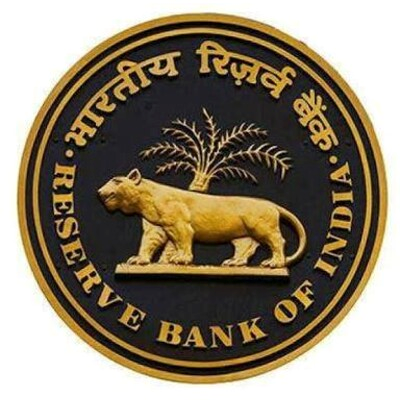RBI's New Liquidity Standards: A Tightrope Walk for Banks
July 28, 2024, 5:12 am

Location: Switzerland, Basel-City, Basel
Employees: 501-1000
Founded date: 1930

Location: India, Maharashtra, Mumbai
Employees: 1001-5000
Founded date: 2005
The Reserve Bank of India (RBI) is tightening the reins on liquidity standards. The proposed changes could reshape the banking landscape. Banks may soon find themselves walking a tightrope, balancing between maintaining liquidity and extending credit.
The RBI's draft guidelines introduce an additional run-off factor for deposits linked to internet and mobile banking (IMB). This move aims to manage the risks associated with the rapid digitalization of banking. The new rules could reduce banks' lendable resources, forcing them to rethink their strategies.
At the heart of this change is the liquidity coverage ratio (LCR). This ratio is a lifeline for banks, ensuring they have enough high-quality liquid assets (HQLAs) to cover net cash outflows for 30 days during stressed conditions. The RBI mandates that banks maintain an LCR of at least 100%. However, the proposed increase in the run-off factor for IMB-enabled deposits could disrupt this balance.
Currently, banks enjoy a credit-deposit ratio of 101%. This means they are lending out more than they are taking in. The RBI's new guidelines could force banks to pull back on lending. With the additional 5% run-off factor for IMB deposits, banks will need to increase their HQLAs. This means more investments in government securities (G-Secs) and less available for loans.
The implications are significant. Banks with a higher proportion of retail deposits linked to IMB will feel the pinch first. They will need to allocate more resources to liquid assets, which could lead to a decrease in their ability to lend. This could slow down credit growth in the economy, a move that some experts see as necessary to prevent overheating.
The RBI's guidelines categorize deposits into stable and less stable. Stable deposits will now have a 10% run-off factor, while less stable ones will see a 15% run-off factor. This distinction is crucial. It reflects the varying degrees of risk associated with different types of deposits. As digital banking becomes more prevalent, the risks associated with these deposits also increase. Instantaneous transfers and withdrawals can lead to sudden cash outflows, putting pressure on banks.
The draft guidelines also address unsecured wholesale funding from non-financial small business customers. These deposits will be treated similarly to retail deposits, further tightening the liquidity standards. The RBI's approach is clear: as technology evolves, so must the regulatory framework.
The central bank's focus on risk management is commendable. The financial landscape is changing rapidly, and the RBI is adapting to these changes. However, the timing of these guidelines raises questions. As the economy continues to recover from the pandemic, will this move stifle growth?
Banks are already grappling with the challenges of a post-pandemic world. The additional run-off factors could exacerbate these challenges. With cash inflows remaining stable, the increased outflows could push the LCR down. Banks with marginally higher LCRs may find themselves in a bind. They will have to either increase their HQLAs or reduce loans and advances.
The RBI's draft guidelines are open for comments until August 31, 2024. Stakeholders have a chance to voice their concerns. The final implementation is set for April 1, 2025. This timeline gives banks a window to prepare, but the uncertainty looms large.
In a world where digital banking is the norm, the RBI's proactive stance is necessary. However, the balance between regulation and growth is delicate. The banking sector must adapt without stifling the economy.
The RBI's approach reflects a broader trend in global banking. After the global financial crisis, regulators worldwide have tightened liquidity standards. The Basel Committee on Banking Supervision introduced the LCR to ensure banks can weather financial storms. The RBI's latest move aligns with this global trend, but it also highlights the unique challenges faced by Indian banks.
As banks navigate these new waters, they must remain vigilant. The additional run-off factors are a reminder of the risks inherent in digital banking. Banks must invest in technology and risk management to safeguard their liquidity.
In conclusion, the RBI's proposed liquidity standards are a double-edged sword. They aim to enhance stability in the banking system while potentially curbing credit growth. As banks prepare for these changes, they must find a way to balance liquidity and lending. The road ahead is fraught with challenges, but with careful navigation, banks can emerge stronger. The RBI's guidelines may just be the catalyst for a more resilient banking sector.
The RBI's draft guidelines introduce an additional run-off factor for deposits linked to internet and mobile banking (IMB). This move aims to manage the risks associated with the rapid digitalization of banking. The new rules could reduce banks' lendable resources, forcing them to rethink their strategies.
At the heart of this change is the liquidity coverage ratio (LCR). This ratio is a lifeline for banks, ensuring they have enough high-quality liquid assets (HQLAs) to cover net cash outflows for 30 days during stressed conditions. The RBI mandates that banks maintain an LCR of at least 100%. However, the proposed increase in the run-off factor for IMB-enabled deposits could disrupt this balance.
Currently, banks enjoy a credit-deposit ratio of 101%. This means they are lending out more than they are taking in. The RBI's new guidelines could force banks to pull back on lending. With the additional 5% run-off factor for IMB deposits, banks will need to increase their HQLAs. This means more investments in government securities (G-Secs) and less available for loans.
The implications are significant. Banks with a higher proportion of retail deposits linked to IMB will feel the pinch first. They will need to allocate more resources to liquid assets, which could lead to a decrease in their ability to lend. This could slow down credit growth in the economy, a move that some experts see as necessary to prevent overheating.
The RBI's guidelines categorize deposits into stable and less stable. Stable deposits will now have a 10% run-off factor, while less stable ones will see a 15% run-off factor. This distinction is crucial. It reflects the varying degrees of risk associated with different types of deposits. As digital banking becomes more prevalent, the risks associated with these deposits also increase. Instantaneous transfers and withdrawals can lead to sudden cash outflows, putting pressure on banks.
The draft guidelines also address unsecured wholesale funding from non-financial small business customers. These deposits will be treated similarly to retail deposits, further tightening the liquidity standards. The RBI's approach is clear: as technology evolves, so must the regulatory framework.
The central bank's focus on risk management is commendable. The financial landscape is changing rapidly, and the RBI is adapting to these changes. However, the timing of these guidelines raises questions. As the economy continues to recover from the pandemic, will this move stifle growth?
Banks are already grappling with the challenges of a post-pandemic world. The additional run-off factors could exacerbate these challenges. With cash inflows remaining stable, the increased outflows could push the LCR down. Banks with marginally higher LCRs may find themselves in a bind. They will have to either increase their HQLAs or reduce loans and advances.
The RBI's draft guidelines are open for comments until August 31, 2024. Stakeholders have a chance to voice their concerns. The final implementation is set for April 1, 2025. This timeline gives banks a window to prepare, but the uncertainty looms large.
In a world where digital banking is the norm, the RBI's proactive stance is necessary. However, the balance between regulation and growth is delicate. The banking sector must adapt without stifling the economy.
The RBI's approach reflects a broader trend in global banking. After the global financial crisis, regulators worldwide have tightened liquidity standards. The Basel Committee on Banking Supervision introduced the LCR to ensure banks can weather financial storms. The RBI's latest move aligns with this global trend, but it also highlights the unique challenges faced by Indian banks.
As banks navigate these new waters, they must remain vigilant. The additional run-off factors are a reminder of the risks inherent in digital banking. Banks must invest in technology and risk management to safeguard their liquidity.
In conclusion, the RBI's proposed liquidity standards are a double-edged sword. They aim to enhance stability in the banking system while potentially curbing credit growth. As banks prepare for these changes, they must find a way to balance liquidity and lending. The road ahead is fraught with challenges, but with careful navigation, banks can emerge stronger. The RBI's guidelines may just be the catalyst for a more resilient banking sector.
